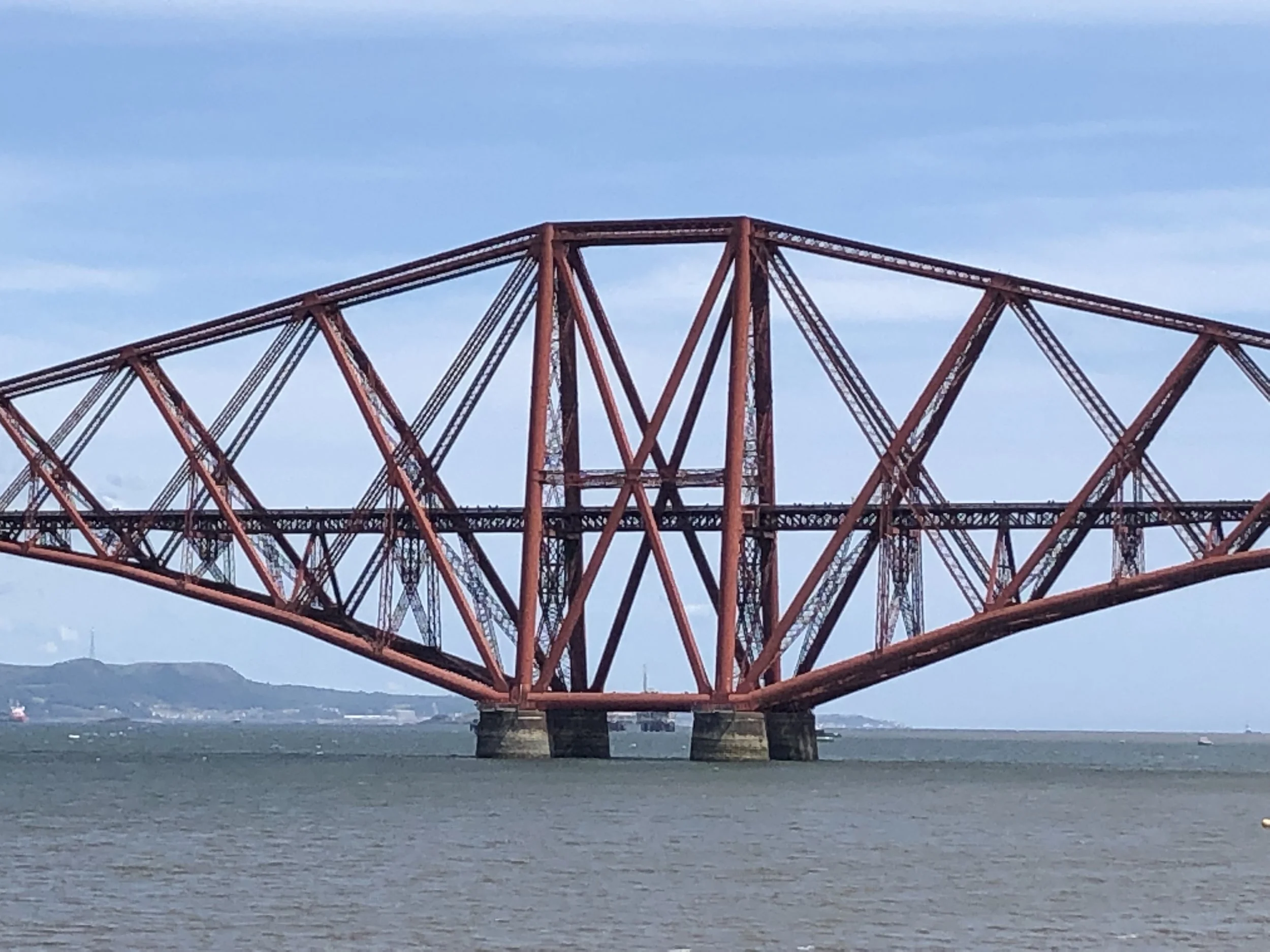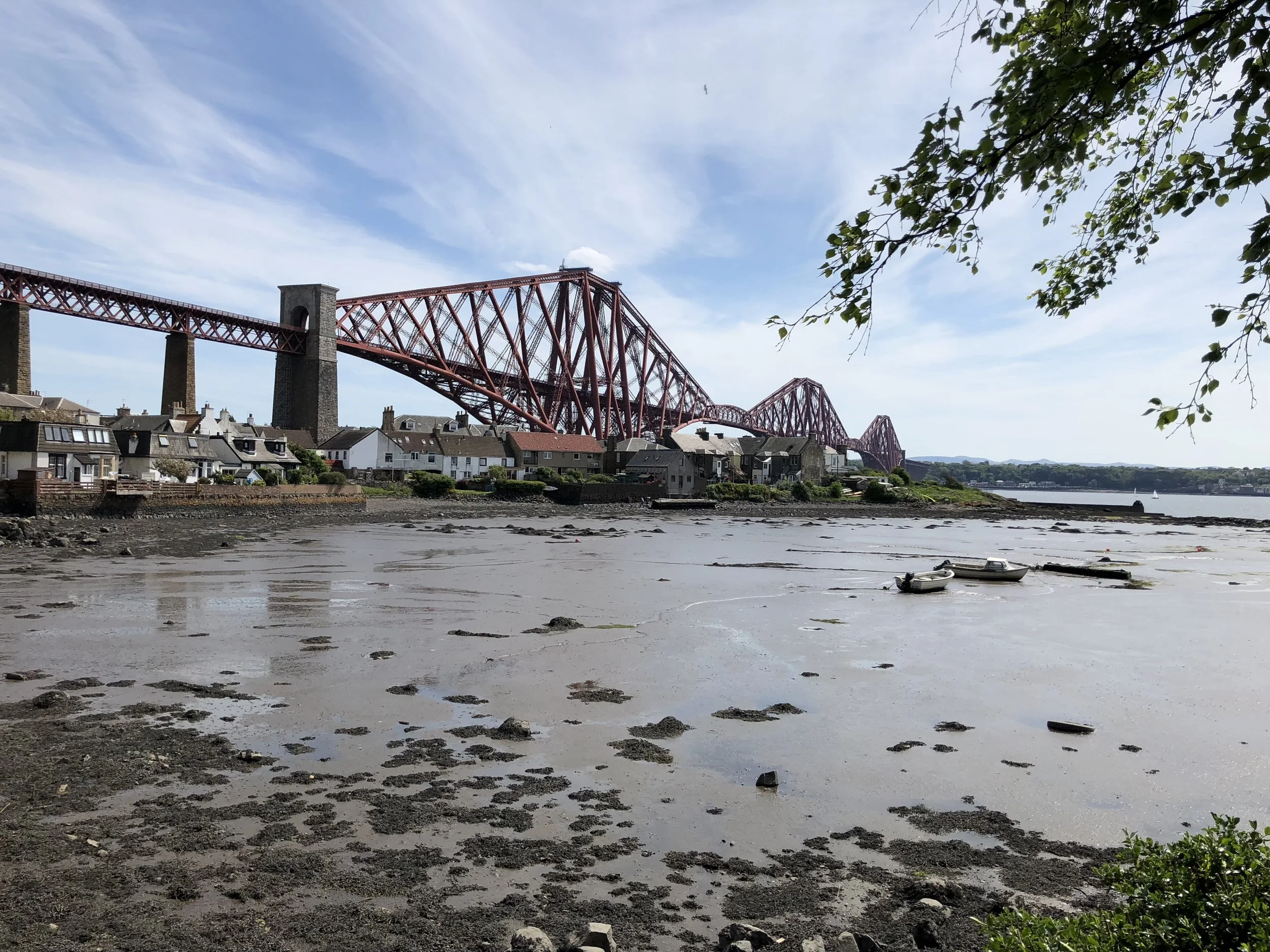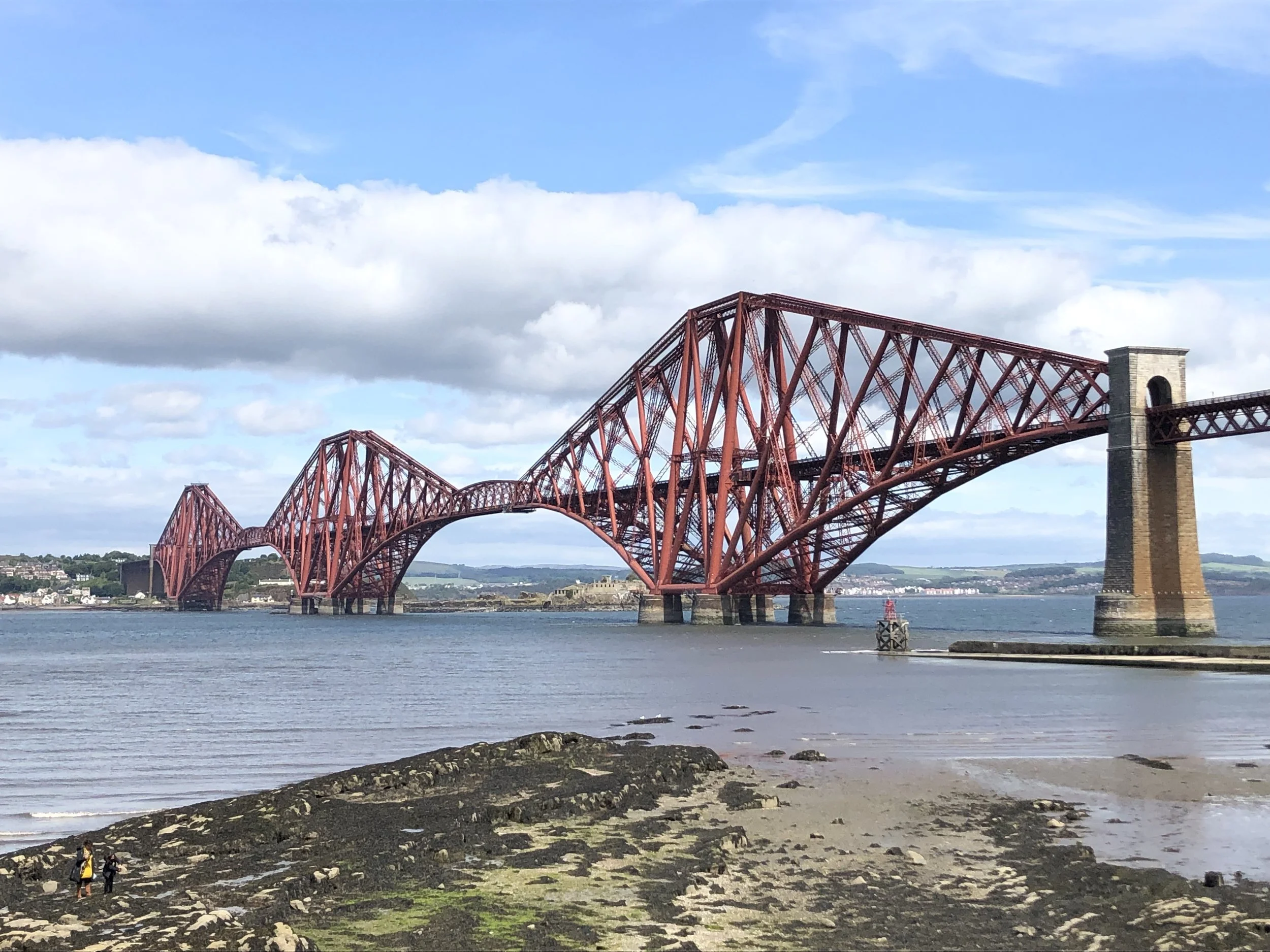A Bridge to Fife - The Three Forth Bridges
Edinburgh is boundaried to the north by the Firth of Forth, the tidal estuary of the River Forth, which flows into the North Sea.
This coast has served as a natural limit to the growth of the city, and for a long time was a major hurdle to travellers - especially pilgrims who made the long trek to the reliquary of St Andrew at the town which bears his name, on the eastern neuk - or 'corner' - of Fife.
Those making their way to St Andrews were faced with a considerable challenge in their efforts to cross the River Forth, necessitating a significant diversion inland to the west to cross at Kincardine, where the river was narrower, before venturing back eastwards to the coast, adding a distance of some forty miles to their already arduous route.
Towns along the northern bank of the Forth created a Pilgrim's Trail, featuring a number of holy sites and shrines to attract such travellers, and villages like Culross - famous today for its use as a setting for the Outlander TV series - capitalised on their saintly connections.
In the eleventh century, Queen Margaret of Scotland - wife of Malcolm III - established a ferry service across the River Forth, to provide pilgrims with a shortcut, and bypassing some of the inland diversion. A ferryman would row travellers across the choppy waters of the Firth of Forth, between two points which today still have names deriving from this transport facility - North and South Queensferry.
But with the growth of Scotland's population and the increase in demands for travel and transport, leading to the rise of mass transit in the 19th century and with the coming of the railways, the Firth of Forth remained a major obstacle for anyone seeking to travel north from Edinburgh or south from Fife.
In 1882 construction began on a cantilevered bridge to span the Forth and carry a railway line which would link Fife directly to Edinburgh. The Forth Bridge was designed by Sir John Fowler and Sir Benjamin Baker, and would become one of Scotland's major landmarks, as well as earning a UNESCO World Heritage Site designation in 2015.
Shortly after its construction was finished in 1889 the bridge was dubbed the 'Eighth Wonder of the World' due to its striking and iconic design of intersecting iron struts, creating a cross-hatching effect that - coupled with its distinctive red colour - made it a visual spectacle.
This style was an accidental consequence of a tragedy which occurred in 1879, when the Tay Bridge - a railway bridge crossing the River Tay at the northern end of Fife - collapsed during a severe winter storm. Seeking to reassure the public of the safety of such large pieces of infrastructure, the Forth Bridge was deliberately over-engineered in order to provide a visual sense of security and strength, adding in the multiple struts and supports to provide more stability than was structurally necessary.
The Forth Bridge opened in 1890, and has since become a feature of Scottish culture as well as an icon of Scottish travel. When Alan Turing, the inventor of the precursor to the modern computer, compiled a series of conditions that would have to be met for a computer to be considered as 'intelligent' as a human being - known as the Turing Test - one of the tasks he described was: 'Write me a sonnet on the subject of the Forth Bridge'. Only if a machine were able to complete all of those tasks laid out by Turing, including the poetry assignment, could it accurately be described as being able to think.
The painting of the bridge also came to be popularly used to describe a Sisyphean task - one that never ends - when it was believed that the job of painting the steel structure in its entirety took so long that by the time a team of workmen had painted from end of it to the other, it was already in need of repainting!
Today the Forth Bridge remains an iconic landmark, as well as providing an invaluable rail link between Fife and Edinburgh which serves thousands of commuters travelling into and out of the city on a daily basis.
Queen Margaret's ferry service continued running for eight centuries (although the boats had been upgraded several times over this period, eventually allowing for cars to be carried!). Even through the end of the 19th century, as trains rumbled across the Forth Bridge high above them, ferries continued shuttling passengers over the waters below. (For a brief time a hovercraft also carried passengers over the Forth a little further to the east.)
In the early 20th century, as car ownership and road travel boomed, a road bridge was planned as a means of providing another means of access across the Forth. Early discussions were held in the 1920s and 1930s, and construction eventually began in 1958.
Forth Road Bridge (front) and Queensferry Crossing (behind)
When it opened in 1964, the Forth Road Bridge was the longest suspension bridge in the world, outside of the United States of America. At just over 2,500m in length, the dual-lane roadway with adjacent footpath is supported between two towers 156m high.
This second bridge to Fife was opened by Queen Elizabeth II in September 1964. As well as improving transport links, for the first time the original Forth Bridge could be viewed from the west, giving travellers an opportunity to appreciate its length and style as it stretched between the banks of the Forth.
At the same time, the original ferry service was discontinued, meaning pilgrims could no longer take a ferry across the Forth for the first time since the eleventh century.
At its peak, the Forth Road Bridge carried 65,000 vehicles across the Forth every day, but by the turn of the 21st century it was reaching the limits of safe capacity, and concerns were raised over the future viability of the bridge as vehicle numbers continued to rise.
Plans for a new road bridge had been discussed in the 1990s, but it wasn't until 2004 that solid arrangements were put in place to commit to upgrading the infrastructure. A third bridge, now known as the Queensferry Crossing, began construction in 2011, and was formally opened by Queen Elizabeth II on 4 September 2017, 53 years to the day since she had opened the Forth Road Bridge.
Queensferry Crossing
Today the Queensferry Crossing carries domestic vehicle traffic over the Firth of Forth, while the Forth Road Bridge is limited to commercial vehicles.
These three bridges offer three contrasting styles and functions, and belong to three separate, consecutive centuries - the Forth Bridge from the 19th century; the Forth Road Bridge from the 20th century; and now the Queensferry Crossing from the 21st century. It's a neat way of demonstrating the continued importance of transport links across the Firth of Forth over those centuries, and a visually arresting demonstration of the evolution of technology and design.
Visitors to Scotland today who take a trip out of Edinburgh will often have reason to pass over one of these three bridges. Anyone travelling to St Andrews for a game of golf, or further north to the Highlands, or even just over to pay a visit to Culross and other Outlander locations in Fife, will pass over the Forth and be able to appreciate the visual effect of three crossings over the same body of water.
They say the best trilogies come in threes, and with our bridge(s) to Fife we have one such trilogy to celebrate!






